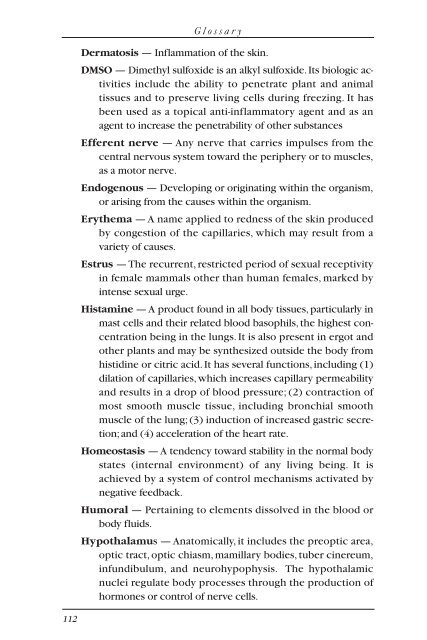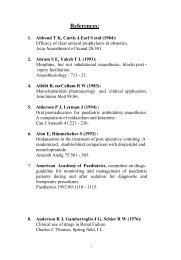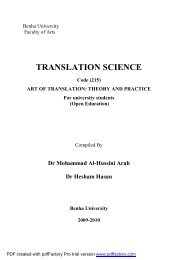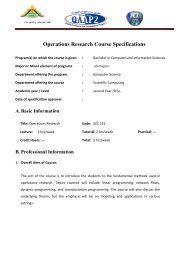at a glance
at a glance
at a glance
You also want an ePaper? Increase the reach of your titles
YUMPU automatically turns print PDFs into web optimized ePapers that Google loves.
112<br />
Glossary<br />
Derm<strong>at</strong>osis — Inflamm<strong>at</strong>ion of the skin.<br />
DMSO — Dimethyl sulfoxide is an alkyl sulfoxide.Its biologic activities<br />
include the ability to penetr<strong>at</strong>e plant and animal<br />
tissues and to preserve living cells during freezing. It has<br />
been used as a topical anti-inflamm<strong>at</strong>ory agent and as an<br />
agent to increase the penetrability of other substances<br />
Efferent nerve — Any nerve th<strong>at</strong> carries impulses from the<br />
central nervous system toward the periphery or to muscles,<br />
as a motor nerve.<br />
Endogenous — Developing or origin<strong>at</strong>ing within the organism,<br />
or arising from the causes within the organism.<br />
Erythema — A name applied to redness of the skin produced<br />
by congestion of the capillaries, which may result from a<br />
variety of causes.<br />
Estrus — The recurrent, restricted period of sexual receptivity<br />
in female mammals other than human females, marked by<br />
intense sexual urge.<br />
Histamine — A product found in all body tissues, particularly in<br />
mast cells and their rel<strong>at</strong>ed blood basophils, the highest concentr<strong>at</strong>ion<br />
being in the lungs. It is also present in ergot and<br />
other plants and may be synthesized outside the body from<br />
histidine or citric acid. It has several functions, including (1)<br />
dil<strong>at</strong>ion of capillaries, which increases capillary permeability<br />
and results in a drop of blood pressure; (2) contraction of<br />
most smooth muscle tissue, including bronchial smooth<br />
muscle of the lung; (3) induction of increased gastric secretion;and<br />
(4) acceler<strong>at</strong>ion of the heart r<strong>at</strong>e.<br />
Homeostasis — A tendency toward stability in the normal body<br />
st<strong>at</strong>es (internal environment) of any living being. It is<br />
achieved by a system of control mechanisms activ<strong>at</strong>ed by<br />
neg<strong>at</strong>ive feedback.<br />
Humoral — Pertaining to elements dissolved in the blood or<br />
body fluids.<br />
Hypothalamus — An<strong>at</strong>omically, it includes the preoptic area,<br />
optic tract, optic chiasm, mamillary bodies, tuber cinereum,<br />
infundibulum, and neurohypophysis. The hypothalamic<br />
nuclei regul<strong>at</strong>e body processes through the production of<br />
hormones or control of nerve cells.

















